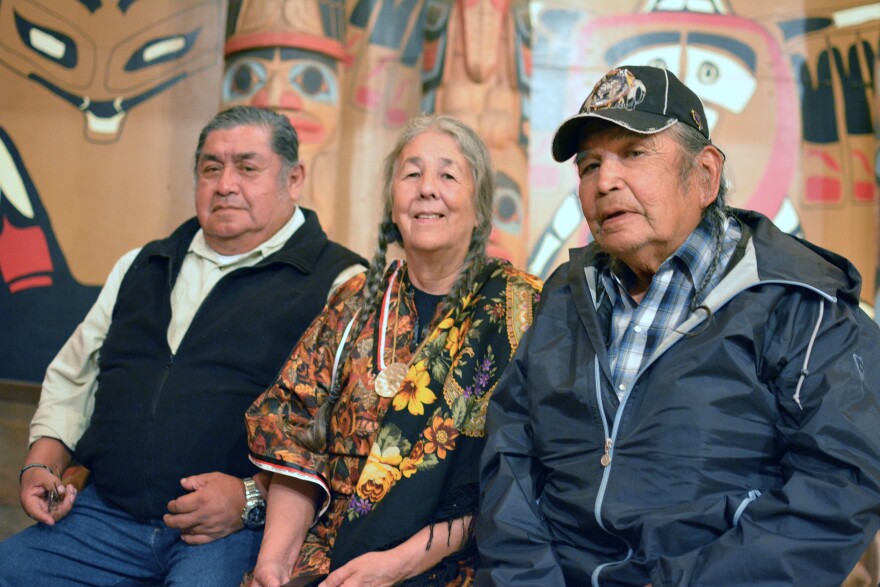 A federal appeals court dismissed a lawsuit from Tribal leaders of the Confederated Tribes of Grand Ronde and the Yakama Nation, who claimed that a 2008 highway expansion destroyed a sacred site near Mount Hood. On Wednesday, the United States Court of Appeals for the Ninth Circuit sided with the federal government, claiming the Tribal leaders’ case was moot.
A federal appeals court dismissed a lawsuit from Tribal leaders of the Confederated Tribes of Grand Ronde and the Yakama Nation, who claimed that a 2008 highway expansion destroyed a sacred site near Mount Hood. On Wednesday, the United States Court of Appeals for the Ninth Circuit sided with the federal government, claiming the Tribal leaders’ case was moot.
This expansion added a center turn lane to a mile-long stretch of the U.S. Highway 26, which had experienced an increase in traffic accidents and fatalities. The Oregon Department of Transportation (ODOT) owns the highway right-of-way easement that Tribal leaders said also encompassed a small sacred area known as Ana Kwna Nchi Nchi Patat, or the Place of Big Big Trees.
In the lawsuit, Tribal leaders asked the federal government to return much of the site to its original state before highway construction bulldozed the area, citing that destruction of the sacred site violated religious, environmental, and land preservation acts. It was filed by Carol Logan, an elder of the Confederated Tribes of Grand Ronde, as well as Wilbur Slockish and Johnny Jackson, hereditary chiefs of the Klickitat Band and Cascade Band of the Yakama Nation, respectively. Jackson died in 2020 from COVID-19.
According to the complaint, the highway safety expansion cut down old growth Douglas fir trees, bulldozed a burial ground and stone altar, and covered medicinal plants and other parts of the site with an earthen berm in 2008. Tribal leaders wanted the federal government to replant trees and medicinal plants, remove the berm and a guard rail, and reconstruct the stone altar — which the federal government called “a rock pile.”
“…when it came to our sacred site — which is like a church to us — the government unleashed the chain saws and bulldozers,” wrote Logan in a Washington Post op-ed. “I was devastated as I watched this destruction — the soil with burial markers was ripped apart like an open wound, and the tall, noble trees were cut to pieces. My heart broke when I saw that Ana Kwna Nchi nchi Patat was the ‘Place of Big Big Trees’ no longer.”
According to earlier court documents, the Tribes have used this site since time immemorial for religious ceremonies that cannot take place anywhere else. Villages, campsites, and burial grounds were traditionally established by Tribes for people who died along the complex, deep-rooted network of regional trails. Tribes used the campsites on trading trips to Celilo Falls, which was later destroyed by construction of the Dalles Dam, and also stopped by the site on their way to the Willamette Valley to pick the traditional food camas.
In a video that had been presented during the case, Slockish said that the Tribes have always taken care of their sacred lands and burial sites.
“That is what we were charged with through our Creator — to take care of them, to make sure that they weren’t disturbed,” he said.
Logan said in the video that the Tribes have tried to educate ODOT over the years by attending meetings as well as talking on TV and radio programs, but they have refused to listen. Since the Yakama Nation, having been represented by Slockish and Jackson, is based in Washington, ODOT was dismissed from the long-running lawsuit in 2012 based on the 11th Amendment, which protects states from being sued by people living in a different state.
“Because ODOT has been dismissed from this suit, none of the defendants has authority to make the changes sought by plaintiffs,” read the dismissal.
In court documents, the federal government said the tribal members never formally proposed any alternative solutions when the expansion was proposed, though attorneys for the leaders argued that ODOT and the Federal Highway Commission could have found ways to add a center turn lane that didn’t harm the site.
Furthermore, according to the video, “Native Americans repeatedly informed the government about the location of the graves and their significance. Even when the Natives proposed reasonable alternatives to the construction plans, the government refused to listen, and instead, they bulldozed the burial grounds in 2008.”
In oral arguments that took place on Tuesday, Nov. 16, attorneys for the federal government claimed that by the time the Tribal leaders filed the lawsuit in October 2008, the site had already been destroyed. One of the attorneys, Joan Pepin, claimed that no one knows what happened to the rocks that comprised the stone altar, and that it therefore cannot be restored.
However, Tribal leaders argued that the federal government didn’t listen to their concerns prior to filing the lawsuit. While the dismissal claimed that the Tribal leaders’ requests would have made the highway less safe, attorneys who represented the leaders said in their opening briefs that the federal government changed highway expansion plans in the 1980s when officials learned about the site — considerations that weren’t taken by highway officials in 2008.
In a response on Twitter, Luke Goodrich, senior counsel for Becket, the firm representing the Tribal leaders, said that this decision — made days before Native American Heritage Day — demonstrates the federal government doesn’t have to be held responsible for destroying sacred sites.
“The government didn’t care that laying waste to an ancient stone altar, bulldozing indigenous burial grounds, and destroying the surrounding nature that people use to gather food and medicine would impede their religious worship, a clear violation of the Religious Freedom Restoration Act,” he tweeted.
Do you have a story for The Advocate? Email editor@corvallisadvocate.com


